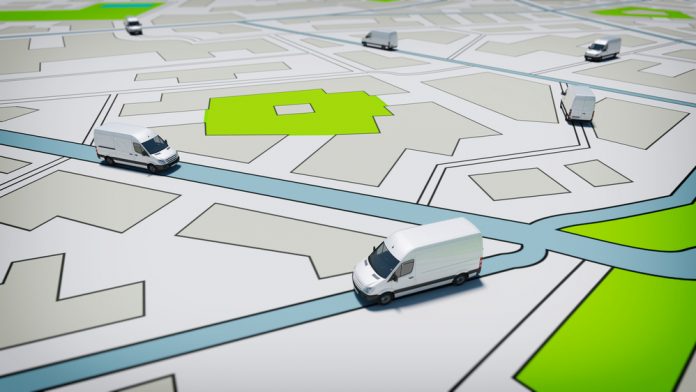A fleet tracking system is essentially how you can keep a check on your vehicles in real time, or otherwise. This modern innovation has proved to be a boon for several businesses that rely on deliveries or movement of goods and raw material. It helps you track the movement of vehicles, in most cases, trucks, throughout their route to the destination and back.
The advantage of fleet tracking is that it keeps a check on various things, such as rule obedience, speed, distance, time, intervals, and a plethora of things that you, as a businessperson, would want to learn about your drivers and vehicles. It is especially important to track the progress and be constantly updated if you have a large fleet that operates throughout the year.
Issues will always occur with a number this big, and it is always advisable to have data at hand to track down the issue and rectify it. Most software and product developers have identified this need and created products that help you track your fleet. However, some of them are overwhelming to understand and use, which is why we have prepared a demarcation for you, that breaks down these complicated words and presents a simplified explanation for the same. Here are some popular fleet tracking techniques used by companies.
1. GPS Tracking
GPS or Global Positioning System is a satellite-based fleet tracking technology. Not only is it a versatile method, but it is also very convenient to use. The low costs of this method add to its advantages. A GPS tracker helps track the live location of your fleet and can be used individually for each vehicle.
The way this works is — every individual vehicle of the fleet is equipped with a GPS tracker. The owner can then view the location of any truck in real time through his/her cell phone or any other GPS-linked device. A GPS tracker works especially well in cases of smaller fleets; however, with the right management, you could make this work even for a comparatively larger one.
The trackers make use of satellites to determine the location and updates are the quickest here. According to a study, having GPS trackers on fleets has helped reduce accidents by 38%. This helps in ensuring the safety and efficiency of your drivers, trucks and goods. Every turn that your fleet makes can be monitored from the comfort of your own office.
2. Tachograph
A tachograph tracking system is one of the latest and most advanced tracking systems out there. It is generally used by larger businesses with a considerable fleet size, but reduced costs and increased convenience have paved the way for smaller businesses to take advantage of this system as well. This device takes into account all data, including driving time, distances and speed, and many similar factors.
A tachograph analysis software helps in determining whether rules have been followed in terms of driving hours set down by the EU, taking note of intervals and stops in between. Integrating your fleets with this system reduces most of your tedious work while ensuring all rules are complied with. When you have a considerably larger business, it is always useful to get on board with technology like this.
A tachograph system might be a bit intimidating in the beginning, but with proper guidance and set-up, you will get used to it in no time. Weighing the pros against the time it takes to learn how to use it, it is easy to determine that the process is worth it.
3. Passive Tracking Systems
A passive tracking system is essentially where the data or information of the whole trip is stored in a device that stays with the fleet. You can download this information from that device upon its return and access it later. The device can be connected to your computer, and the information can be viewed from there.
If your business does not require real-time tracking, this system is best for you. However, if you need to check the live location and track your vehicles and drivers by the minute, you should consider going for another, more suitable option like a tachograph.
The advantage of having a passive tracking system is that the data is more authentic and highly detailed. It can also be cheaper to install when compared to other more high-grade systems. It even works offline and does not need a lot of up-keep. However, one of the major disadvantages of this is that due to its lack of real-time tracking, crisis solving can get delayed. You might learn of an issue long after it occurs, and hence not be able to solve it.
Weigh your options accordingly and see if this system suits your business. If it does, it is a great and inexpensive way of conducting your business.
Conclusion
These tracking systems are broadly classified into active and passive trackers. If your business has limited investment and you do not need a minute-by-minute update of your fleet, try opting out of an active tracking system. It is a bit more on the expensive side and could be a bit unnecessary for your business.
However, do not compromise on efficiency. The whole purpose of having a fleet tracker is to ensure the smooth running of your business even when you are not there. This tool, even though costly at first (especially during installation), has an amazing return on investment. It will start paying back in no time and will soon become very easy to handle.
These modern methods might be difficult to decipher, but they are effective nonetheless. There are many companies that offer fleet tracking services, and you are free to choose any depending on the type of business (food delivery, e-commerce, B2B company etc.), and the size of your fleet. Platforms like Samsara not only ease your struggle but also end up minimising costs. You could consider visiting their website and knowing about them in further detail. They will help you break free from the confusing jargon of fleet management and help you monitor your vehicles the right way, and in the best possible manner.
Find a Home-Based Business to Start-Up >>> Hundreds of Business Listings.















































